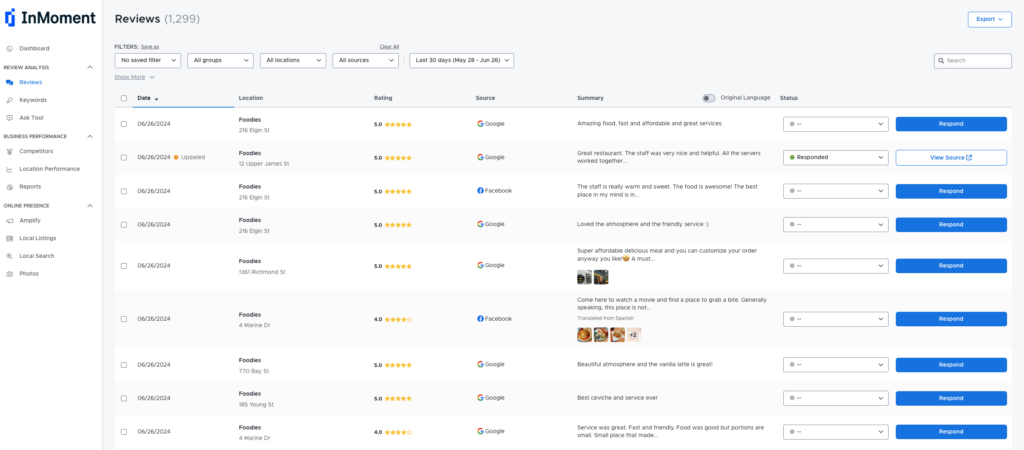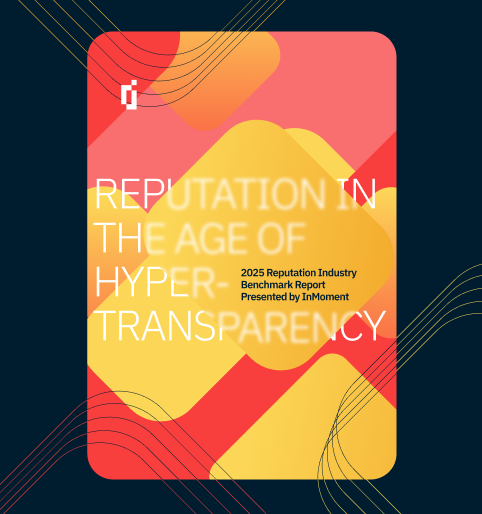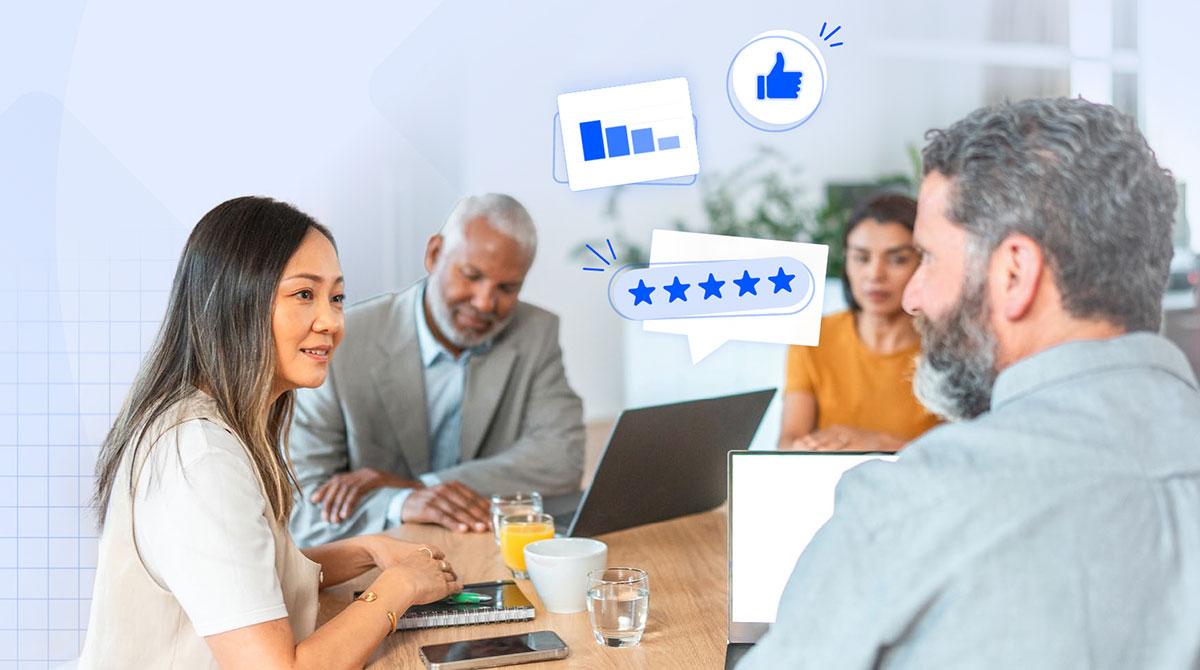Spotting Fake Reviews and How to Get Real, Authentic Reviews
Fake reviews, often written by paid individuals, bots, or competitors, misrepresent genuine customer experiences and can mislead consumers. Spotting them involves looking for overly positive or negative language, vague descriptions, and suspicious reviewer profiles.
Fake reviews are an escalating problem for both consumers and businesses. Nearly 30% of online reviews are now estimated to be fake, and this figure keeps rising. As consumers grow more aware of this issue, they’re becoming increasingly cautious about purchasing products or services.
In fact, over 50% of consumers say they wouldn’t buy a product if they suspected the reviews were fake. Businesses can report fake reviews on platforms like Google and to the FTC, and using tools like Pearl-Plaza’s Reputation Management can help gather authentic reviews and strengthen customer trust.
What is Considered a Fake Review?
A fake review is any review that is misleading, fabricated, or incentivized in a way that doesn’t represent a genuine customer experience. These can include reviews written by paid individuals, ai-generated reviews, or even disgruntled competitors looking to harm a business’s reputation.
Where do Fake Reviews Come From?
Fake reviews originate from various sources. Some businesses might pay for positive reviews to boost their products or competitors might post negative reviews to undermine other businesses.
Automated systems, often referred to as bots, can also be programmed to flood review platforms with misleading feedback. Additionally, incentivized reviews, where customers are given free products or discounts in exchange for positive reviews, are increasingly common.
How to Spot Fake Reviews?
Spotting fake reviews can be challenging, as they often blend in with genuine feedback. Inauthentic reviews—whether excessively positive or sharply critical—can distort a business’s real value and lead to misguided decisions. Here are some quick tips to help you identify fake reviews:
Overly positive or negative language: Authentic reviews tend to be more balanced. Be cautious of reviews that are excessively enthusiastic or intensely negative, as they may be less trustworthy.
Generic descriptions: Watch for vague language that lacks specifics about the product, service, or experience. Genuine reviewers typically mention specific features, benefits, or issues they encountered.
Reviewer history: Check the reviewer’s profile age and activity. Fake profiles are often newly created, with little review history or reviews across unrelated categories.
Consistent monitoring: Regularly review customer feedback to catch suspicious patterns early. Set up alerts or schedules to keep track of any sudden changes that could indicate fake activity.

Fake Review Checker
Several tools are available for detecting fake reviews, such as Fakespot and ReviewMeta, which analyze reviews for patterns that may indicate inauthentic behavior. These tools can be helpful for evaluating the credibility of product reviews on platforms like Amazon, but they are less effective for location-based reviews found on platforms like Google Maps, Yelp, or TripAdvisor.
This is a limitation for businesses interested in managing their local reputation, as location-based reviews significantly impact consumer trust and search rankings. While tools tailored specifically for location reviews are less common, review management software can help you monitor your customer feedback and address fake reviews at a location level.
How to Report a Fake Review?
Many review platforms allow users to report reviews they suspect are fake, though the process can vary by site. When reporting, it’s helpful to gather as much information as possible to support your claim. Supporting evidence can include specifics like unusual language patterns, repeated phrases across multiple reviews, or timing patterns that seem out of the ordinary.
Businesses also have an additional avenue for reporting fake reviews: they can file complaints with the Federal Trade Commission at ReportFraud.ftc.gov. The FTC takes consumer and business reports seriously as part of its mission to protect against misleading practices.
How to Report a Fake Review on Google?
With 57.5% of all online reviews appearing on Google, knowing how to report a fake review is essential. Here’s a step-by-step guide to help you attempt removal if you suspect a review is inauthentic:
- Sign in to your Google account and go to Manage Your Business Profile.
- Open the profile for the business you’d like to manage.
- On the left-hand menu, select Reviews.
- Locate the review you want to report, then click Flag as inappropriate.
Once flagged, Google will review the report. If the review is found to violate Google’s policies, it may be removed. To check the review’s status, you can visit the support page or contact Google support if no action has been taken within a few days
Are Fake Reviews Illegal?
Yes, fake reviews can be illegal in many jurisdictions. In the U.S., for instance, the FTC has clear guidelines against deceptive practices, which include posting or commissioning fake reviews. The FTC considers fake reviews a violation of the FTC Act, as they mislead consumers and distort fair competition. Companies found guilty of such practices can face substantial fines and other penalties.
The Risk of Faking Your Reviews
Posting or encouraging fake reviews carries significant risks beyond potential fines. For example, fake reviews can damage a brand’s credibility if customers suspect or uncover them. Once trust is lost, it’s hard to regain, and a company’s reputation may suffer in the long term. Search engines also have algorithms that detect suspicious review activity, so the risk of detection is high.
It’s far better to invest in strategies that organically boost positive customer reviews and ratings. Reliable, honest feedback is always more valuable and sustainable for business growth.
Boost Authentic Positive Reviews With Pearl-Plaza
Pearl-Plaza can help you get more authentic reviews and elevate your customer experience. Our Reputation Management solution empowers brands to grow their positive review base, all while staying compliant with FTC guidelines to protect brand reputation and foster long-term trust.
With Pearl-Plaza, you can request reviews and even automate your solicitation workflows, saving valuable time while maximizing results. Review and keyword alerts enable your team to quickly address issues and spot reviews that might be fake.
Additionally, Pearl-Plaza’s Integrated CX approach combines reviews with other valuable experience signals, such as survey data, competitor insights, call center data, and more. This unified perspective uncovers actionable insights for operational improvements that help you enhance customer experiences, leading naturally to more 5-star reviews.
Say “no” to fake reviews with Pearl-Plaza! Schedule a call with us today to learn how to get more real reviews and boost your reputation.
References
Invesp. The State of Fake Reviews – Statistics and Trends [2025] (https://www.invespcro.com/blog/fake-reviews-statistics/). Accessed 10/31/24.
Wisernotify. 15 Fake Review Statistics You Can’t Ignore (2024) (https://wisernotify.com/blog/fake-review-stats/). Accessed 10/31/24.




